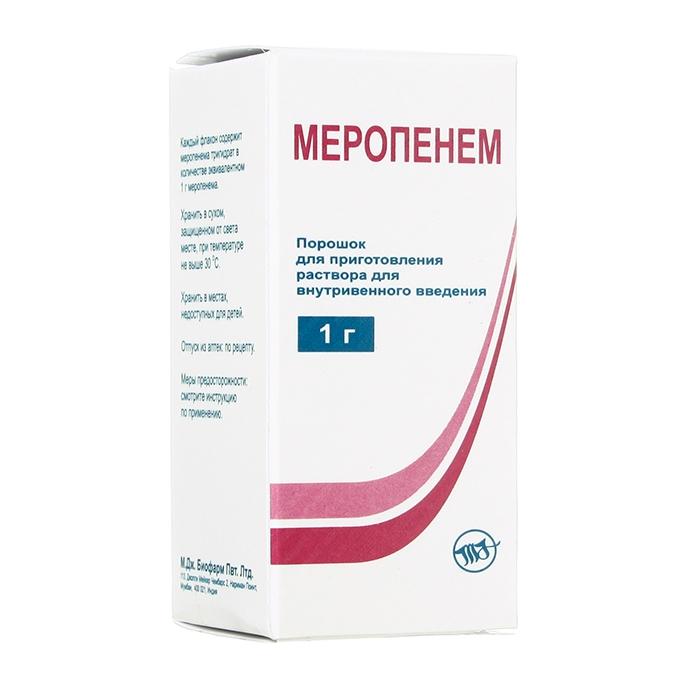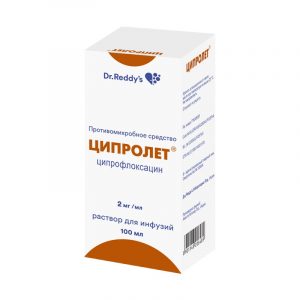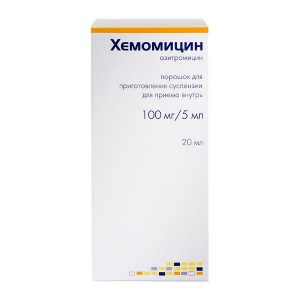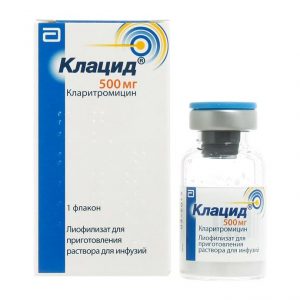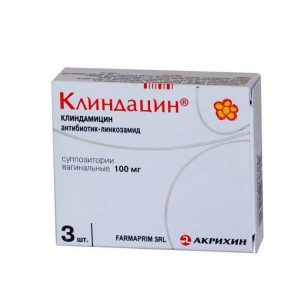Description
Release form
Powder for the preparation of a solution for intravenous administration of 1.0 g. 1.0 g of the active substance in 20 ml vials of transparent colorless glass, corked by rubber stoppers and squeezed out by aluminum caps with a plastic seal. 1 or 10 bottles, together with instructions for use, are placed in a pack of cardboard.
Pharmacological action
Antibiotic from the carbapenem group, intended for parenteral use. It has a bactericidal effect by inhibiting the synthesis of the bacterial cell wall. The bactericidal effect of meropenem against a wide range of aerobic and anaerobic bacteria is explained by the high ability of meropenem to penetrate the bacterial cell wall, a high level of stability to most beta-lactamases, and significant affinity for penicillin binding proteins.
Interacts with receptors – specific penicillin-binding proteins on the surface of the cytoplasmic membrane, inhibits the synthesis of the peptidoglycan layer of the cell wall (due to structural similarity), inhibits transpeptidase, promotes the release of autolytic enzymes of the cell wall, which ultimately causes its damage and death of bacteria.
Bactericidal and bacteriostatic concentrations practically do not differ.
activity spectrum Gram-positive aerobes: Enterococcus faecalis including vancomycin-resistant strains), Staphylococcus aureus (penicillin-non-producing and penicillin-producing [methicillin-sensitive]) Streptococcus sensitens, Streptococcus pneumoniaepti, Streptococcus pyrepten, Streptococcus pyreptepten, Streptococcus pneumoniaepti viridans groups.
Gram-negative aerobes: Escherichia coli, Haemophilus influenzae (penicillin-producing and penicillin-producing), Klebsiella pneumoniae, Neisseria meningitidis, Pseudomonas aeruginosa, Proteus mirabilis.
Anaerobic bacteria: Bacteroides fragilis, Bacteroides thetaiotaomicron, Peptostreptococcus spp.
With respect to the microorganisms listed below, meropenem is effective in vitro, however clinically its effectiveness in diseases caused by these pathogens has not been proven: Gram-positive aerobes: Staphylococcus epidermidis (penicillin-producing and penicillin-producing [methicillin-sensitive]).
Gram-negative aerobes: Acinetobacter spp, Aeromonas hydrophila, Campylobacter jejuni, Citrobacter diversus, Citrobacter freundii, Enterobacter cloacae, Haemophilus influenzae (ampicillin-resistant, penitsillinazoneprodutsiruyuschie strains), Hafnia alvei, Klebsiella oxytoca, Moraxella catarrhalis (penitsillinazoneprodutsiruyuschie and penitsillinazoprodutsiruyuschie), Morganella morganii. , Pasteurella multocida, Proteus vulgaris, Salmonella spp., Serratia marcescens, Shigella spp., Yersinia enterocolitica.
Anaerobic bacteria: Bacteroides distasonis, Bacteroides ovatus, Bacteroides uniformis, Bacteroides ureolyticus, Bacteroides vulgatus, Clostridium difficile, Clostridium perfringens, Eubacterium lentum, Fusobacterium spp., Prevotella bivia, Prevotella intermedia, Prevotella melaninogenica, Porphyromonas asaccharolytica, Propionibacterium acnes.
Pharmacokinetics
With intravenous administration of 250 mg for 30 minutes, the maximum concentration (Cmax) is 11 μg / ml, for a dose of 500 mg – 23 μg / ml,for a dose of 1 g – 49 μg / ml. With an increase in dose from 250 mg to 2 g, the clearance of meropenem decreases from 287 to 205 ml / min.
With an intravenous bolus within 5 min, 500 mg of meropenem Sshah is 52 μg / ml, 1 g -112 μg / ml. Communication with plasma proteins – 2%. It penetrates well into most tissues and body fluids, including into the cerebrospinal fluid of patients with bacterial meningitis, reaching concentrations exceeding those required to suppress most bacteria (bactericidal concentrations are created 0.5-1.5 hours after the start of the infusion). In small quantities, pass into breast milk.
It undergoes a slight metabolism in the liver with the formation of a single microbiologically inactive metabolite.
The elimination half-life is 1 hour, in children under 2 years of age – 1.5 – 2.3 hours. The pharmacokinetics of meropenem in children and adults are similar in the dose range of 10-40 mg / kg, a linear dependence of the pharmacokinetic parameters is observed.
Does not cumulate.
It is excreted by the kidneys – 70% unchanged for 12 hours. The concentration of meropenem in urine in excess of 10 μg / ml is maintained for 5 hours after administration of 500 mg.
In patients with renal failure, clearance of meropenem correlates with creatinine clearance. In such patients, dose adjustment is necessary.
In elderly patients, a decrease in clearance of meropenem correlates with an age-related decrease in creatinine clearance. The elimination half-life is 1.5 hours. Meropenem is excreted during hemodialysis.
Indications
Infectious and inflammatory diseases (monotherapy or in combination with other antimicrobial drugs) caused by meropenem-sensitive pathogens: lower respiratory tract infections (including pneumonia, including hospital-acquired)
infections of the abdominal cavity (complicated by appendicitis , pelvioperitonitis)
infections of the urinary system (pyelonephritis, pyelitis)
infections of the skin and soft tissues (including erysipelas, impetigo, secondarily infected dermatoses)
infections of small organs aza (including endometritis)
bacterial meningitis, septicemia
empirical treatment (alone or in combination with antiviral or antifungal drugs) with suspected infection in adult patients with febrile neutropenia.
Contraindications
History of hypersensitivity to meropenem or other beta-lactam antibiotics, children up to 3 months.
Precautions
Concomitant administration with potentially nephrotoxic drugs. Persons with complaints of the gastrointestinal tract (including with colitis).
Use during pregnancy and lactation
Meropenem should not be used during pregnancy, unless the potential benefit of its use justifies the potential risk to the fetus.
Meropenem should not be used during lactation, except in cases where the potential advantage of its use justifies the possible risk to the child. If necessary, use of the drug during lactation should consider stopping breastfeeding.
Special instructions
Treatment of patients with liver diseases should be carried out under close monitoring of the activity of hepatic transaminases and the concentration of bilirubin. In the process of treatment, the development of resistance of pathogens is possible, in this connection, long-term treatment is carried out under the constant control of the spread of resistant strains.
In people with diseases of the gastrointestinal tract, especially with colitis, it is necessary to take into account the possibility of developing pseudomembranous colitis (the toxin produced by Clostridium difficile is one of the main causes of colitis associated with antibiotics), the first symptom of which may be the development of diarrhea during treatment.
When using meropenem as a monotherapy in critically ill patients with a suspected lower respiratory tract infection caused by Pseudomonas aeruginosa, or if it is suspected, regular testing of the pathogen sensitivity to meropenem is recommended.
There is no experience with the use of the drug in children with neutropenia, with primary or secondary immunodeficiency.
Composition
active substance – meropenem trihydrate -1.140 g, in terms of meropenem -1.0 g
excipient: sodium carbonate.
Dosage and administration of
I / O for adults, a single dose varies from 500 mg to 2 g, the frequency of administration and the duration of treatment are set individually, depending on the indications and severity of the disease. For children with a body weight of less than 50 kg – 10-12 mg / kg every 8 hours in children with a body weight of more than 50 kg, doses intended for adults are used. V / m adults – 500 mg every 8 hours, elderly patients – 500 mg every 12 hours.
Side effects of the digestive system: epigastric pain, nausea, vomiting, diarrhea, constipation, anorexia, jaundice, cholestatic , hyperbilirubinemia, increased activity of hepatic transaminases, alkaline phosphatase, lactate dehydrogenase rarely – candidiasis of the oral mucosa, pseudomembranous colitis.
From the cardiovascular system: the development or worsening of heart failure, cardiac arrest, tachy or bradycardia, decreased or increased blood pressure, fainting, myocardial infarction, thromboembolism of the branches of the pulmonary artery.
From the urinary system: dysuria, edema, impaired renal function (hypercreatininemia, increased plasma urea concentration), hematuria.
Allergic reactions: itching of the skin, skin rash, urticaria, erythema multiforme exudative (Stevens-Johnson syndrome), angioedema, anaphylactic shock.
From the nervous system: headache, dizziness, paresthesia, insomnia, drowsiness, increased irritability, agitation, anxiety, depression, impaired consciousness, hallucinations, epileptiform seizures, convulsions.
Laboratory indicators: eosinophilia, neutropenia, leukopenia, rarely – agranulocytosis, hypokalemia, leukocytosis, reversible thrombocytopenia, decreased partial thromboplastin time, anemia.
Local reactions: inflammation, phlebitis, thrombophlebitis, pain at the injection site.
Other: positive direct or indirect Coombs tests, hypervolemia, shortness of breath, vaginal candidiasis.
Drug Interactions
Medicines that block tubular secretion slow down excretion and increase the plasma concentration of meropenem.
May decrease plasma concentrations of valproic acid.
Storage conditions
In a dry, dark place at a temperature of no higher than 25 ° C.
Keep out of the reach of children.
Expiration
2 years.
Do not use after the expiry date stated on the packaging.
Deystvuyuschee substances
Meropenem
prescription
pharmacies for prescription s14lfro41 prescription p1414 pff14 pf14 pf14 pf14 pf14 pf14 pf14 pf14 pf14f1
Prescription
Form of Treatment
simply entails dlya infusing
Appointment
Vzrosl m on purpose doctor, Prescription children
Indications
From skin infections, From pneumonia, From infectious diseases, From intestinal infections, From urinary tract infections, From respiratory infections
Possible product names
Meropenem vial, 1 g
Biofarm, India
